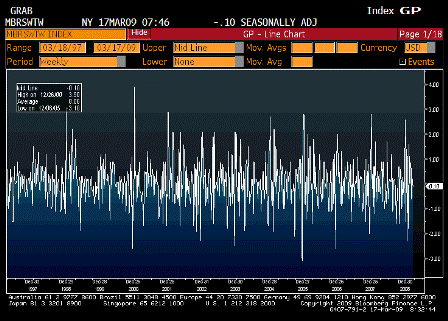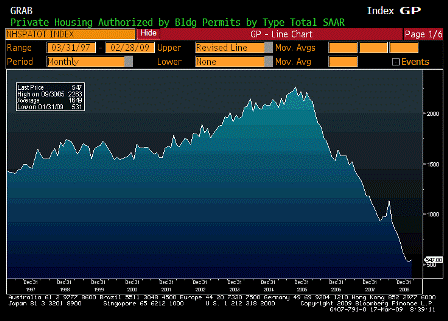And interesting how they want to substitute taxes that are equally regressive, but that’s another story.
by Hendrik Hertzberg
Mar 18 (The New Yorker) — On Hardball the other night, David Frum was complaining about the Republican Partyâ€â€Âa popular activity at MSNBC, a cable news network whose prime-time hosts are non-Republicans, including Hardball’s Chris Matthews. Frum, however, is a non-non-Republican, and an overdetermined one: 1980 Reagan volunteer, Federalist Society activist, Wall Street Journal editorial-page editor, George W. Bush speechwriter (“axis of evilâ€ÂÂ), National Review contributing editor, American Enterprise Institute resident fellow. What conservatives are saying, he told Matthews, is increasingly not only counterproductive economically but also politically. We look like we don’t care. We look like we’re indifferent. We don’t offer solutions. We’re talking about a spending freeze in the middle of a 1929-30-style meltdown!
On ABC’s This Week, David Brooks, the Times columnist, was even more aghast. Brooksâ€â€Âwhose conservative credentials (William F. Buckley, Jr., protégé, Wall Street Journal op-ed editor, Weekly Standard senior editor) aren’t too shabby, eitherâ€â€Âsaid wonderingly, “There are a lot of Republicans up on Capitol Hill right now who are calling for a spending freeze in the middle of a recession slash depression. That is insane.†Quite a lot of Republicans, actually, and they weren’t just talking about it: On March 6th, John Boehner, the House Republican leader, made a motion on the floor for just such a freeze. His charges voted for it, a hundred and fifty-two to nothing.
The theory that preventing the United States government from spending more money will halt the cascading crisis of demand that threatens the world with recession slash depression is indeed crazy. And many Republicans, even as they rail against “government spending,†at least understand that the government must cause more money to be spent, and that the fiscal deficit must rise in the process. They just want the government to do the job indirectly, by cutting taxesâ€â€Âespecially taxes paid by the well-off, such as inheritance taxes, capital-gains taxes, corporate taxes, and high-bracket income taxesâ€â€Âin the hope that the money left untaxed will be spent. It is useless to point out to them that this approach was tried for eight years and found wanting, that in this economy the comfortable are less likely than the strapped to spend any extra cash that comes their way, that government spending often serves socially useful purposes, that “wasteful spending†is not a government monopoly (see corporate jets, golf-course “conferences,†premium vodkas), and that the only way to insure that money is spent is, precisely, to spend it.
And yet, lurking underneath the anti-spending, pro-tax-cutting cant is one idea that might truly have merit. Frum mentioned it on that Hardball broadcast, touching off this rather cryptic exchange:
FRUM: I’m for a big payroll-tax holiday that would go into effect immediately.
MATTHEWS: I know about the payroll, uhâ€â€Âin other words, it gets money back in the hands of people who are working people, right?
FRUM: Up to a hundred and twenty dollars per week per worker, starting last month.
MATTHEWS: But it sounds like a liberal argument. The funny thing is, the liberals haven’t pushed it. And I don’t know why, because working people pay a very regressive tax when they go to work, right?
Right. The payroll taxâ€â€Âa.k.a. the Social Security tax, the Social Security and Medicare tax, or the Federal Insurance Contributions Act (FICA) tax skims around fifteen per cent from the payroll of every business and the paycheck of every worker, from minimum-wage burger-flippers on up, with no deductions. No exemptions, eitherâ€â€Âexcept that everything above a hundred grand or so a year is untouched, which means that as salaries climb into the stratosphere the tax, as a percentage, shrinks to a speck far below. This is one reason that Warren Buffett’s secretary (as her boss has unproudly noted) pays Uncle Sam a higher share of her income than he does. In fact, three-quarters of American households pay more in payroll tax than in income tax.
Where income taxes are concerned, even Republicans seldom argue that taxing added income over a quarter million dollars at, say, thirty-six per cent rather than thirty-three per cent is wrong because the affluent need more stuff. They argue that making the rich richer enables them to create jobs for the non-rich. More jobs: that’s a big argument for capital-gains and inheritance-tax cuts, too. But the payroll tax is a direct tax on work and workersâ€â€Âon jobs per se. If the power to tax is the power to destroy, then the payroll tax is, well, insane.
Frum is not the only Republican on the case. “If you want a quick answer to the question what would I do,†Mitch McConnell, the Senate Republican leader, said recently, “I’d have a payroll-tax holiday for a year or two. That would put taxes in the hands of everybody who has a job, whether they pay income taxes or not.†Other Republican politicians and conservative publicists have made similar noises. They haven’t made it a rallying point, though; it would, after all, shape the over-all tax system in a progressive direction. Anyhow, their sincerity may be doubted: when President Obama proposed a much more modest cut along similar linesâ€â€Âa refundable payroll-tax credit of four hundred dollarsâ€â€Âthey denounced it as a welfare giveaway.
Liberals have been reticent, too. The payroll tax now provides a third of federal revenues. And, because it nominally funds Social Security and Medicare, some liberals regard its continuance as essential to the survival of those programs. That’s almost certainly wrong. Public pensions and medical care for the aged have become fixed, integral parts of American life. Their political support no longer depends on analogizing them to private insurance. Besides, the aging of the population, the collapse of defined-benefit private pensions, the volatility of 401(k)s, and pricey advances in medical technology mean that, no matter what efficiencies may be achieved, Social Security and Medicare willâ€â€Âand shouldâ€â€Âgrow. Holding them hostage to ever-rising, job-killing payroll taxes is perverse.
If the economic crisis necessitates a second stimulusâ€â€Âand it probably willâ€â€Âthen a payroll-tax holiday deserves a look. But it’s only half a good idea. A whole good idea would be to make a payroll-tax holiday the first step in an orderly transition to scrapping the payroll tax altogether and replacing the lost revenue with a package of levies on things that, unlike jobs, we want less rather than more ofâ€â€Âthings like pollution, carbon emissions, oil imports, inefficient use of energy and natural resources, and excessive consumption. The net tax burden on the economy would be unchanged, but the shift in relative price signals would nudge investment from resource-intensive enterprises toward labor-intensive ones. This wouldn’t be just a tax adjustment. It would be an environmental program, an anti-global-warming program, a youth-employment (and anti-crime) program, and an energy program.
Impossible? A politically heterogeneous little group with the unfortunately punctuated name of Get America Working! has been quietly pushing this combination for twenty years. In one form or another, without much fanfare, it has earned the backing of such diverse characters as Al Gore and T. Boone Pickens, the liberal economist James Galbraith and the conservative economist Irwin Stelzer, Republican heavies like C. Boyden Gray and Democratic heavies like Robert Reich. It’s ambitious, it jumbles ideological and partisan preconceptions, and it represents the kind of change that great crises open political space for. Does that sound like anyone you know?















